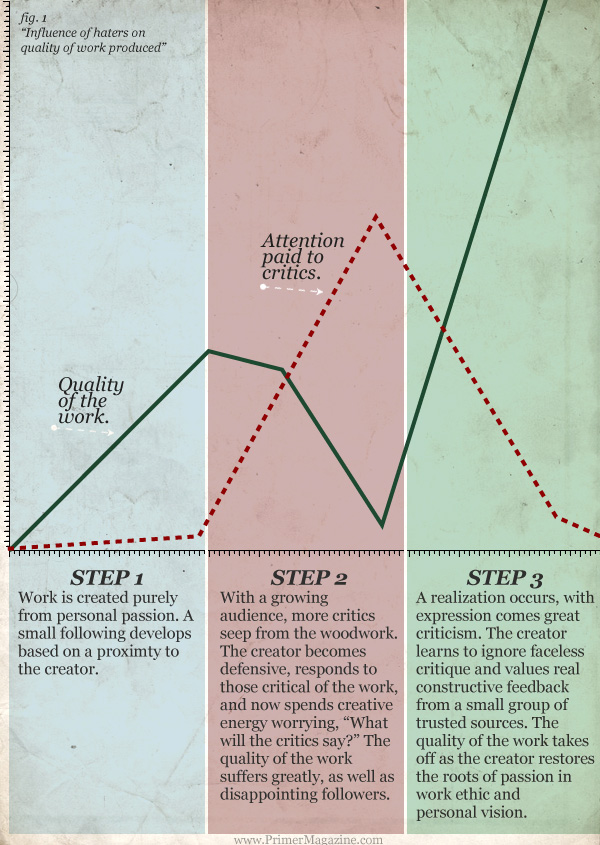
“It is not the critic who counts; not the man who points out how the strong man stumbles, or where the doer of deeds could have done them better. The credit belongs to the man who is actually in the arena, whose face is marred by dust and sweat and blood, who strives valiantly; who errs and comes short again and again; because there is not effort without error and shortcomings; but who does actually strive to do the deed; who knows the great enthusiasm, the great devotion, who spends himself in a worthy cause, who at the best knows in the end the triumph of high achievement and who at the worst, if he fails, at least he fails while daring greatly. So that his place shall never be with those cold and timid souls who know neither victory nor defeat.”
By Jeff Barnett
No matter what type of project you embark on, so-called “haters” will always show themselves offering unproductive criticism. As it turns out, they're only as prominent as you make them.
Movements of creativity often follow a pattern of three steps:
1. The creator begins creating something he loves. He does it for no reason other than he loves it. He’s never criticized because the creator, two of his friends, and his mom are the only people that know about his work. Because there is genuine passion in his work and it has real value to others, he is eventually recognized and attracts a small following.
2. As his following grows, so do his critics. Suddenly the creator is inundated with information on why his creation is not as good as he thought. Everyone claims that his creation could be done better if only someone else were in charge. The creator becomes defensive. He suddenly spends as much of his time responding to critics as he does improving his creation. Eventually, most of his decisions finish with the lingering thought, “What will the critics say?”
3. Over a period of weeks, months, or years the creator realizes that the critics are cowards. He instantly recognizes criticism that is borne of ignorance and discards it. He expects criticism and uses it to gauge whether he is on the right track. He knows that cowards will always attack his creation, because it reminds the cowards that they could not create it. The creator then goes back to the root of what made his creation great: his creativity, his work ethic–his vision for his work.
I implore you, skip step #2. When critics arrive, pat them on the head like a child and keep working. You’ll learn who to go to for real constructive criticism and feedback, and it’s not random people from the internet. You need feedback to improve your craft, but don’t give a moment’s thought to the randoms who will assault you with one-liners about your work. Furthermore, you don’t even owe them a response. You don’t owe them your attention. Don’t let someone control you by extracting 10 minutes of your time for a response to useless babble. Act like you never heard them. They don’t want your work, and you surely don’t want their hand in your work.
Never stop creating your vision, the way you did at first. If someone else can do it better, let them show you in their own work, but don’t humor them by modifying your vision. Create your vision and nobody else’s. When the critics arrive, welcome them. It means you are succeeding. Now act as if they don’t exist, because your continued success depends on it.















